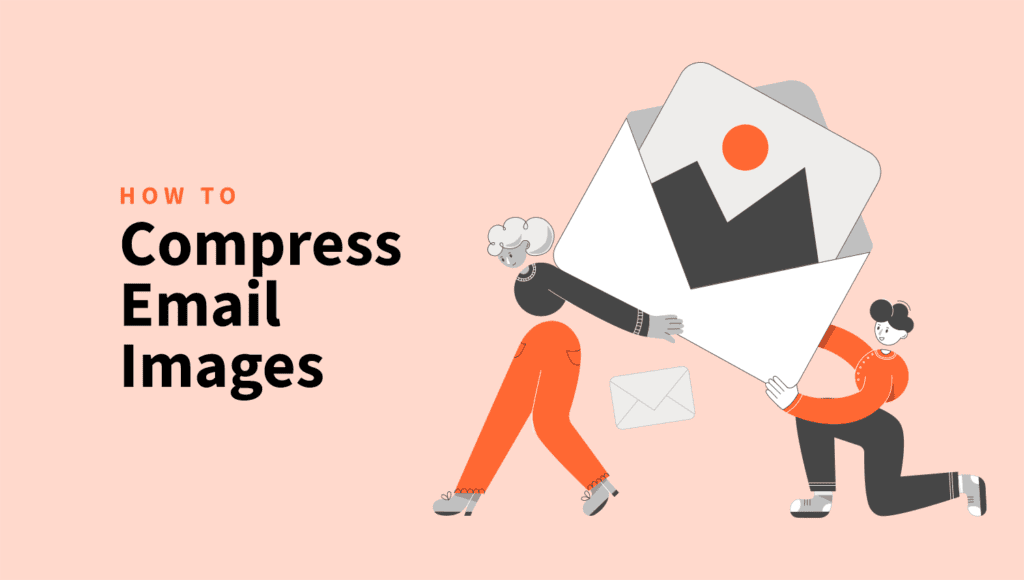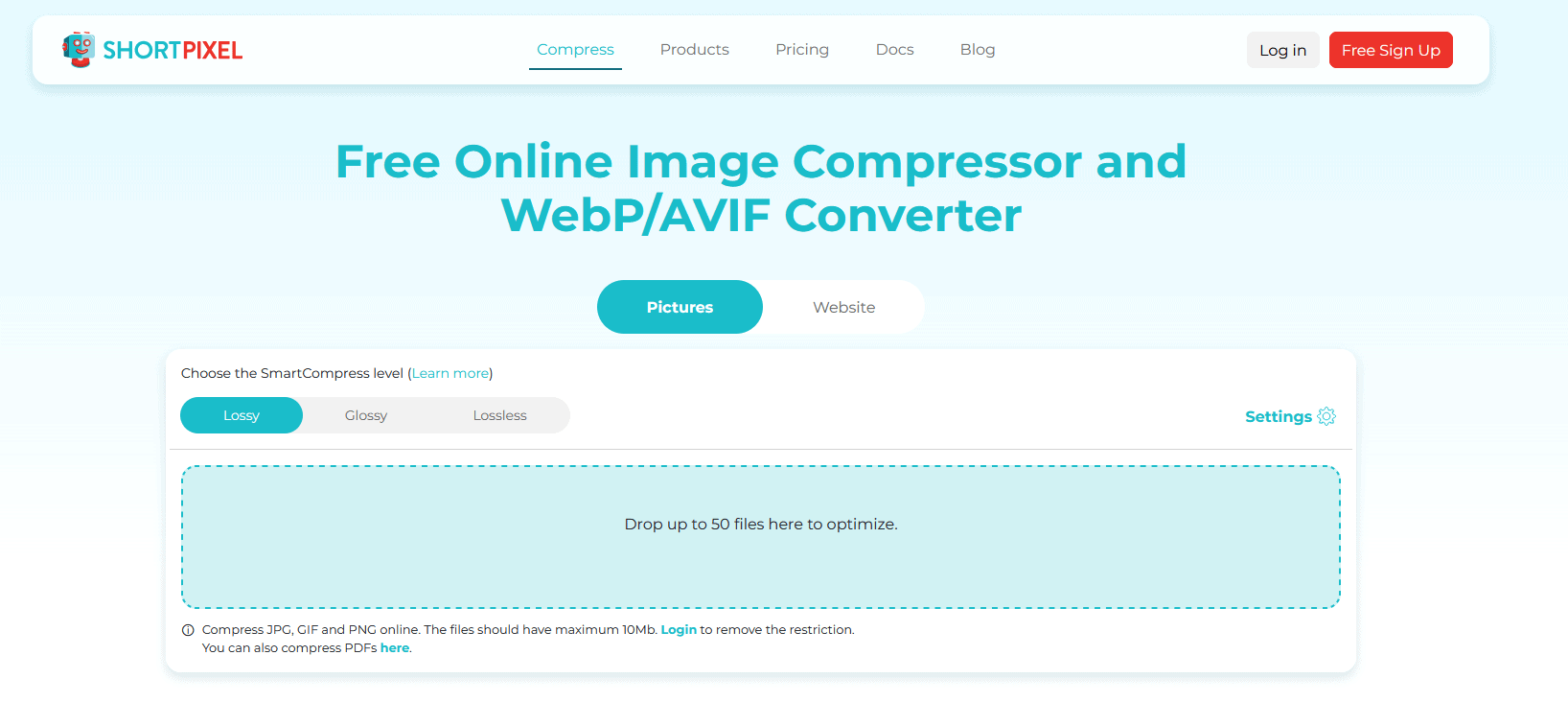How to Compress Images for Email: Easy Tricks for Tiny File Sizes

If you’re trying to send images via email, you might run into the issue of file sizes being too large to send easily.
Large image files can slow down the sending process or even cause emails to bounce back.
The good news is that you don’t have to sacrifice image quality to make your files smaller.
In this post, we’ll show you simple tricks to compress images for email, keeping your files tiny without losing quality. Whether you’re sending photos, graphics, or documents, these tips will make the process smoother and quicker.
Why compress images for email?
If you send high-res images a lot, knowing how to compress a photo for email is a real lifesaver. Here’s why it matters:
And here are the main reasons:
Email file size limits
Most email providers set a cap on attachment size, typically between 10 MB to 25 MB. For example, Gmail allows up to 25 MB, while Outlook limits attachments to 20 MB.

Large images can easily push you over that limit, leading to bounce-backs or emails that just won’t go through. Compressing your email images lets you share those high-quality photos without stressing over attachment size limits.
Faster to send and download
Sending a massive image file? Get ready to wait.
Plus, large attachments can significantly slow email transmission, causing delays in the delivery of important messages.
Compressing them makes sending way faster, which is a big plus when you’re in a hurry. On the other end, it’s also easier for your recipient to download without dealing with lag.
Avoid email deliverability issues
Emails with a size of 100KB or less are more likely to pass through spam filters and reach recipients’ inboxes.
Compress images for email to keep attachments lightweight, reducing the risk of deliverability issues.
This is especially important when sending emails that contain links or content resembling phishing email examples, which are often flagged by spam filters due to their size and structure.
Saves inbox space for you and them
Sending smaller files means you’re not eating up space in your recipient’s inbox (or yours!).
This is especially helpful for people with limited storage or email providers that put a hard cap on disk space.
Tip: If you use Gmail, be aware that each Google account includes 15 GB of storage. Be careful with email attachments, as they can quickly drain up your storage.
How to compress images for email
We’ve got a few handy ways site owners could compress photos for email without compromising quality.
For the most part, you need an image optimization tool with all the bells and whistles to make your image attachments easily shareable.
1. Use the right image file format
How to compress an image for email while keeping the quality intact really comes down to choosing the right file format.
JPEG vs. PNG vs. GIF – which perfectly matches my email photos? I get asked this question a lot.
Each image format has its perks and downsides.
- JPEG: Use the JPEG format for colorful, detailed images like photographs. It’s ideal when you need to reduce image file size without sacrificing much quality.
- PNG: Choose PNG for images where clarity is key, such as logos or graphics with sharp lines. PNG maintains detail and supports transparency, making it great for presentations or emails.
- GIF: Go with GIF for animations or simple images with fewer colors. Stick to 256 colors or less for the best compression and smoother animations.
2. Resize images for email
Smaller images load faster. A 100 KB image zips across the web four times quicker than its 1MB counterpart. Every millisecond counts, and resized images give your emails a crucial head start.
Using an image size reducer like ShortPixel lets you cater to high-resolution screens without blowing up file sizes. For phone users, you can also use an app to resize photo.

For emailing, the magic number is 5MB. Most providers cap attachments around 25MB, so resizing keeps you under the limit and avoids frustrating bounce-backs.
Smaller images aren’t just lighter on your inbox and gentler on your recipient’s device. For mobile users, that means less processing power drained, better battery life, and happier recipients.
How to resize images using ShortPixel
Follow these steps to resize images using ShortPixel:
- Go to ShortPixel’s online Image Compressor tool.
- Under “Resize to maximum,” specify the maximum width and height.
- Choose either the “Both” or “One” resize option (see this article if you’re unsure which).
- Select the compression level (Lossy, Glossy, or Lossless) to further reduce the file size.
- Upload your files and then download the resized images after the process is complete.

3. Compress the images for email
To compress image for email without compromising visual quality, focus on adjusting compression settings. ShortPixel offers three compression options – lossy, glossy, and lossless.

Lossy compression is a method to reduce picture size by removing some data, making it smaller but with a slight drop in quality.
Glossy is ideal for those who prioritize image quality but are willing to accept a small trade-off in size. It’s perfect for photographers and other professionals who use high-quality images and want to decrease image size without significantly losing image quality.
Lossless compression shrinks files through optimization without losing quality. It means the details remain pristine, but lossless may only offer a slight reduction in file size.
Here are a few helpful tips worth considering when compressing email visuals with ShortPixel:
- Image types: Use stronger compression for JPEGs to handle lossy compression. Use lighter compression for PNGs and GIFs, which need more lossless treatment.
- Resize images: Check the option to resize the images down before compression. This can significantly reduces file size.
- Compress PDFs: ShortPixel can also compress PDF documents;.
- Experiment with settings: Try different compression levels and preview the changes to find the best visual quality vs. file size trade-off.
- Find the smallest acceptable size: The goal is the smallest image file size without excessive quality loss for each image.
4. Remove EXIF data
Another effective way to further compress photo files is by removing EXIF data. EXIF data stores metadata like camera settings, location, and date, which can increase file size without adding value for email recipients.
Privacy tip: EXIF data includes camera settings and location info, which might not be necessary when emailing photos. Remove it to make your image smaller and protect your privacy.
ShortPixel’s online compression tool offers an easy way to remove this metadata along with compressing the image. Make sure “Keep exif” is turned off in the Settings before uploading the images for processing.
5. Use a ZIP file
Last but not least, compressing images into a ZIP file is an excellent way to send multiple images in a single email.
This method allows you to bundle your images together into one compact file. ZIP files compress the images, which helps reduce the overall file size, especially when sending several images that might be too large to send individually.
Final thoughts
To wrap it up, compressing images for email is all about finding the right balance between size and quality.
Start by resizing images to fit the dimensions you need, and then tweak the compression settings to get the file size down without losing too much quality.
Removing EXIF data helps trim unnecessary info, and zipping your images together makes it easier to send multiple files without hitting those email size limits.
With these simple tips, you’ll make email sending quicker, save on bandwidth, and make sure your recipients don’t have to deal with slow loading times. Just start compressing your images, and your inbox (and everyone else’s) will definitely be better for it!
Compress pictures for email for free!
Optimize images for email effortlessly using the best image compressor.
FAQs
Does reducing image size in email reduce quality?
Reducing image dimensions will not reduce the quality. Also, reducing the image file size will not affect quality if compressed using lossless or less aggressive compression methods. You can use tools like ShortPixel’s online compression tool to achieve this.
How to compress photos for emailing?
To compress photos for emailing, resize the image to smaller dimensions and optimize them to reduce file size without losing quality. Tools like ShortPixel’s online compression tool can help with this.
How to optimize an image for email?
To optimize an image for email, reduce the file size without sacrificing clarity using tools like ShortPixel’s online compression tool.
What is the recommended image file size for email?
The recommended image file size for email is typically under 1MB to ensure fast loading and prevent email delivery issues. If you need to reduce the size, you can use tools like ShortPixel’s online compression tool to maintain quality while reducing the file size.
What is the best image ratio for email?
The recommended aspect ratio for email images is 16:9 or 4:3. This will avoid images looking stretched or squished, making sure they display properly across devices and email clients.
Does compressing a file make it smaller for email?
Yes, compressing a file makes it smaller, which is helpful for email. It reduces the file size without significantly affecting the quality, making it easier to send via email. You can use tools like ShortPixel to compress image size for this purpose.
What is the best way to compress photos?
The best way to compress photos using a specialized optimization tool like ShortPixel. This helps reduce the size of your files while maintaining the quality, making it ideal for emailing or web use.